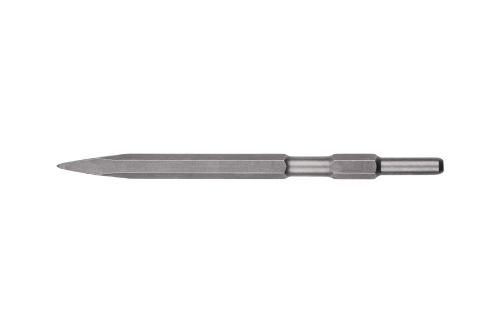The production steps for a hex shank chisel typically involve several stages. Here is a general outline of the manufacturing process:
Material Selection: The first step is to select the appropriate material for the chisel, considering factors such as strength, durability, and the intended application. Common materials used for chisels include high carbon steel, alloy steel, or other hardened tool steels.
Blank Preparation: The selected material is shaped into a blank or billet through processes like casting, forging, or machining. The blank is typically a cylindrical rod that will be further processed to form the chisel.
Shank Formation: The blank is further machined to create the hexagonal shank shape. This is achieved by using specialized cutting tools or machines that can remove material in a hexagonal pattern, forming the desired shank geometry. The hex shank provides the means to securely attach the chisel to a compatible tool, such as a hammer drill or rotary hammer.
Cutting Edge Formation: The next step is to create the cutting edge of the chisel. This involves grinding or machining one or both ends of the chisel blank to the desired shape. The cutting edge can be flat, pointed, wide, or specialized for specific applications, depending on the intended use of the chisel.
Heat Treatment: To enhance the hardness and strength of the chisel, it undergoes a heat treatment process. This typically involves heating the chisel to a specific temperature and then cooling it rapidly or slowly to achieve the desired hardness and toughness properties. Heat treatment processes such as quenching and tempering are commonly used.
Surface Finishing: After heat treatment, the chisel may undergo surface finishing processes to improve its appearance, remove any burrs or sharp edges, and provide corrosion resistance. This can include grinding, polishing, or coating the chisel with protective materials like chrome or powder coating.
Quality Control: Throughout the production process, quality control checks are performed to ensure that the chisels meet the required specifications and standards. This can include dimensional checks, hardness testing, and visual inspections to identify any defects or inconsistencies.
Packaging: Once the chisels pass quality control, they are packaged and prepared for shipment or distribution. They are typically packaged in protective cases or containers to prevent damage during transportation and to provide convenient storage for end-users.




 English
English
 中文简体
中文简体
 Español
Español
 عربى
عربى












